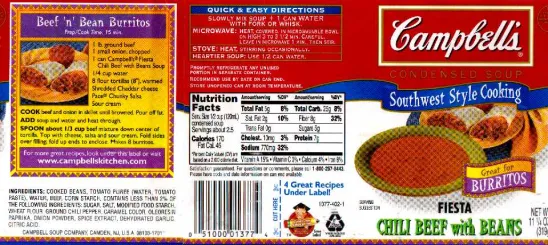In the sphere of European food law, 2014 ended with somewhat of a bang, because the long-anticipated EU Food Information for Consumers Regulation (“EU FIC”) came into force on 13 December. The Regulation introduced and consolidated various requirements for the information accompanying food, whether given on the pack itself, or by some other means where food is loose/ non pre-packed. We have commented previously on the opportunities the changes potentially present to businesses, not least in terms of changes to the allergen requirements.
However, we are now well into the second month of 2015 and there is no sign that the focus on food information, authenticity and traceability is slowing down. There are already a number of pointers that this train is going to keep on running in 2015:
1. Country of Origin Labelling – Changes in Force 1 April 2015
The EU FIC contains general obligations (under Article 26) to ensure that consumers are not misled with regard to origin or provenance of a food product. Details on the place of origin or provenance of a product have to be indicated if a failure to do so might mislead the consumer as to the true origin or provenance of the product. Furthermore, where the country of origin or the place of provenance of a food is given and that place is not the same as that of its primary ingredient, the fact that it is different must be indicated; and the origin of the primary ingredient must also be given. These requirements have been in force since December 2014.
As well as these general obligations, country of origin rules had already existed in specific EU legislation for products such as beef, honey, fish and olive oil. However, the EU FIC permitted a number of ways to potentially extend the range of foods subject to mandatory origin declaration rules.
From 1 April 2015, Country of origin information will be required for fresh, chilled and frozen meat of swine, sheep, goats and poultry. Implementing Regulation (EU) No 1337/2013 lays down the rules for this requirement. The Member State or non-member country in which the (last) rearing period took place, as well as its place of slaughter and the batch code identifying the meat supplied, must be indicated.
However, animals who were born, reared and slaughtered in the same country can be labelled: “Origin: [Member State][Third Country]. Furthermore, there will be a derogation for minced meat and trimmings, which can be labelled as “EU”, “Non-EU”, or “Reared and Slaughtered in the EU and non-EU Countries” (Article 7).
2. Country of Origin Labelling – Further Changes Proposed
Another sign of the focus continuing is that there are still further changes proposed to country of origin labelling. The EU FIC had already required the Commission to submit reports to the European Parliament and the Council regarding the mandatory indication of the country of origin or place of provenance for:
-
Types of meat other than beef, swine, sheep, goat and poultry;
-
Milk and milk used as an ingredient in dairy products;
-
Unprocessed foods;
-
Single ingredient products; and
-
Ingredients that constitute over 50% of a food.
The reports on origin for milk, milk as an ingredient, unprocessed foods, single ingredient products and ingredients representing more than 50% of a food are still awaited, but are expected soon.
The Commission published its report on meat used as an ingredient on 17 December 2013, but on 11 February this year, MEPs voted (by 460 votes to 204) to urge the Commission to make it mandatory to state the country of origin of meat used in processed foods such as ready-made lasagne or burgers, to “ensure more transparency throughout the food chain, better inform European customers and thus help rebuild their confidence” – see further European Parliament Press Release following Plenary Session.
3. European Consumer Organisation – Informed Food Choices for Healthier Consumers
The European Consumer Organisation, BEUC, is certainly continuing the focus on food information. On 6 February 2015, it published a paper entitled ‘Informed Food Choices for Healthier Consumers‘. The Organisation say that in their view the EU FIC was a “missed opportunity to improve consumer information while food companies are in any case obliged to redesign packages to comply with the new rules”. They advocate that mandatory front of pack labelling would have been useful in helping consumers make informed choices.
They also call for full information in relation to alcoholic products, including ingredient lists and nutritional information.
So, is it the case that 2015 will see a continued focus on food information, authenticity and traceability? It may be too early to say, but the early signs certainly indicate that the focus is not abating.




 />i
/>i
